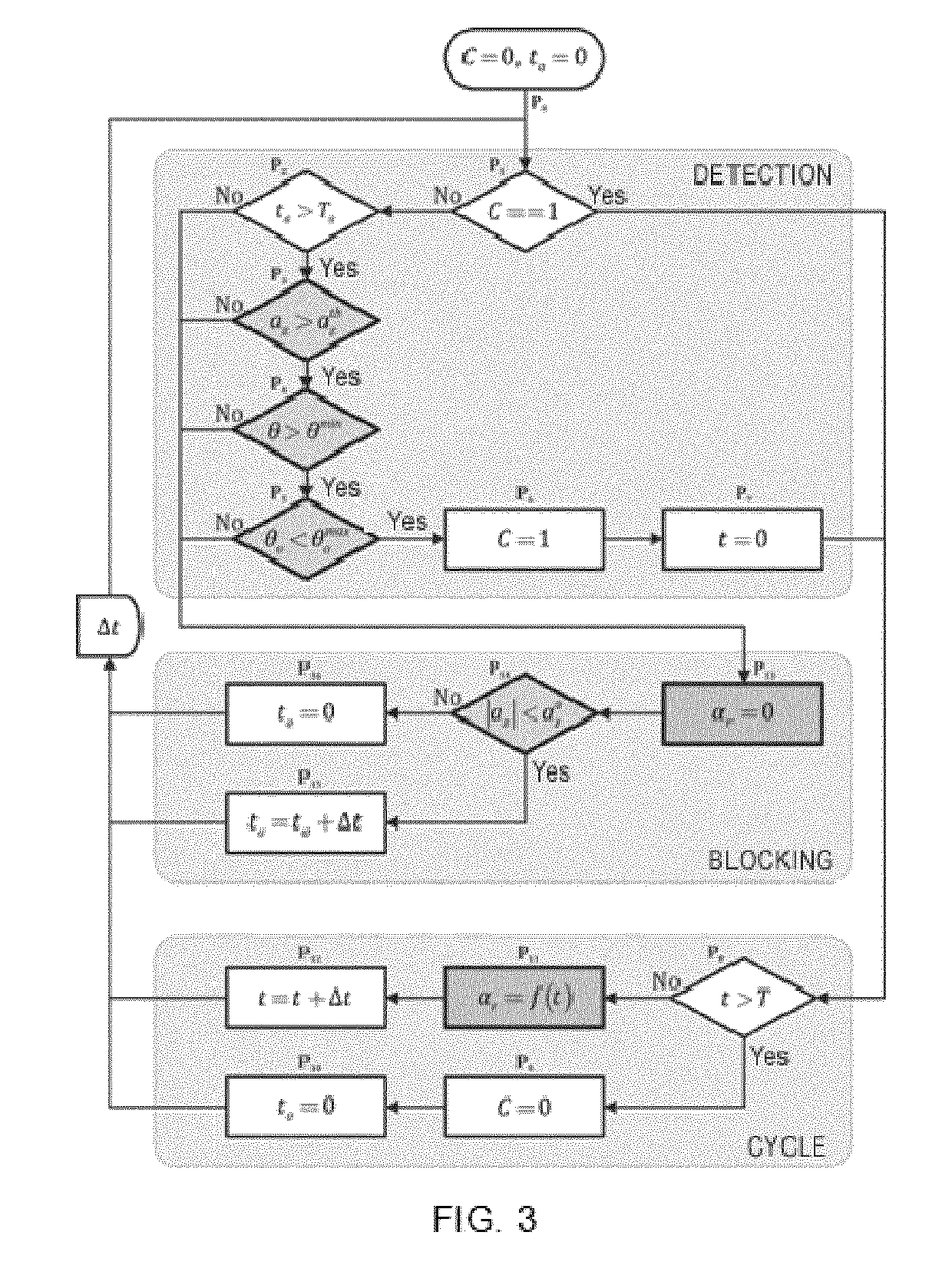System to assist walking
a technology of walking assistance and gait assistance, which is applied in the field of gait assistance devices, can solve the problems of large and expensive devices, high energy costs, and devices not intended for use by people with spinal cords
- Summary
- Abstract
- Description
- Claims
- Application Information
AI Technical Summary
Benefits of technology
Problems solved by technology
Method used
Image
Examples
Embodiment Construction
[0038]A device, which is an embodiment of the invention, can be seen in FIG. 1. The device includes a pair of KAFO-type orthoses to which there is coupled an actuator for setting the angle of flexion (αr) of the knee, a sensor for measuring the angle of inclination (θ) of the leg and optionally its vertical acceleration az, a control unit (7) to which there are connected the array of sensors (6) and the actuator (5), the control unit (7) implements an algorithm to decide how to change the angle of the knee in the supporting phase (knee blocked) and swing phase (flexion-extension) depending on the reading from the sensors. This algorithm is explained in detail in FIG. 3.
[0039]Again, FIG. 1 shows an embodiment in which the main elements can be seen. A support (1) for the foot which can be rigid or flexible (often referred to as a “drop foot splint”) and holds the user's foot, a rigid lower structure (2) which is secured to the patient's calf, a rigid upper structure (3) which is secur...
PUM
 Login to View More
Login to View More Abstract
Description
Claims
Application Information
 Login to View More
Login to View More - R&D
- Intellectual Property
- Life Sciences
- Materials
- Tech Scout
- Unparalleled Data Quality
- Higher Quality Content
- 60% Fewer Hallucinations
Browse by: Latest US Patents, China's latest patents, Technical Efficacy Thesaurus, Application Domain, Technology Topic, Popular Technical Reports.
© 2025 PatSnap. All rights reserved.Legal|Privacy policy|Modern Slavery Act Transparency Statement|Sitemap|About US| Contact US: help@patsnap.com


